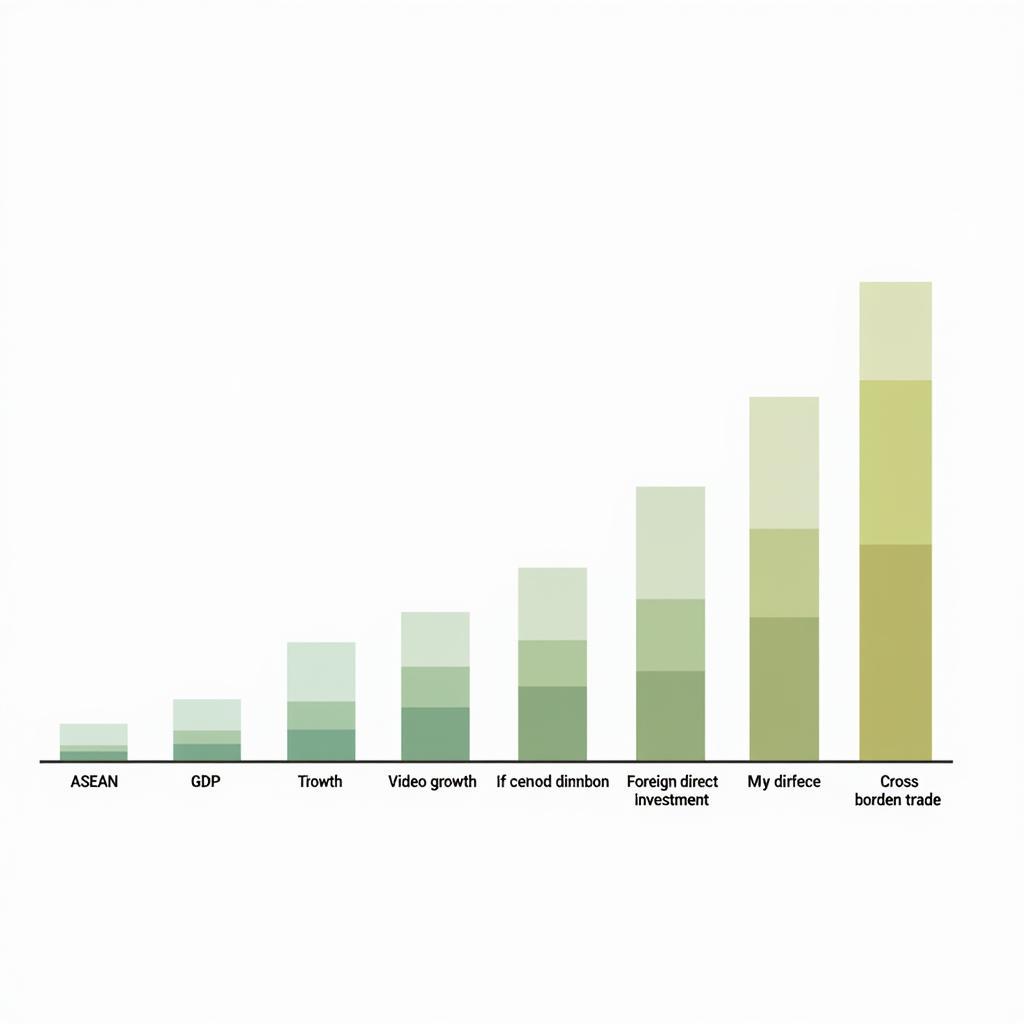The ASEAN Banking Integration Framework (ABIF) is a crucial initiative aimed at fostering greater financial connectivity within Southeast Asia. This article delves into the key aspects of the ABIF, exploring its significance, challenges, and potential benefits for the region’s dynamic financial landscape. We’ll also address how you might find the actual Asean Banking Integration Framework Pdf.
The ABIF represents a significant step towards a more integrated ASEAN financial market, aiming to facilitate cross-border banking activities and enhance financial stability. This framework addresses critical areas such as regulatory harmonization, supervisory cooperation, and market infrastructure development. A deeper understanding of the ABIF is essential for anyone involved or interested in the ASEAN financial sector.
Understanding the ASEAN Banking Integration Framework (ABIF)
The ABIF is not a single document but a collection of agreements and guidelines aimed at harmonizing banking regulations and practices across ASEAN member states. This framework seeks to create a level playing field for banks operating within the region, encouraging greater competition and efficiency. The ABIF addresses key areas such as capital adequacy, risk management, and corporate governance.
- Harmonization of regulations: The ABIF works towards aligning banking regulations across ASEAN countries, reducing regulatory discrepancies and promoting greater consistency.
- Enhanced supervisory cooperation: The framework facilitates closer collaboration between banking supervisors in different ASEAN member states, enabling them to share information and coordinate their efforts more effectively.
- Market infrastructure development: The ABIF supports the development of robust market infrastructure, including payment systems and clearing houses, to facilitate cross-border transactions and improve market efficiency.
Finding the ASEAN Banking Integration Framework PDF
While there isn’t a single, consolidated “ASEAN banking integration framework PDF” readily available for public download, various related documents and publications can be accessed through official ASEAN channels and related organizations. These include reports, policy statements, and agreements that provide valuable insights into the framework’s principles and objectives. Searching official ASEAN websites and financial institutions like the Asian Development Bank will yield relevant information.
Key Benefits of ABIF
The implementation of the ABIF is expected to bring several benefits to the ASEAN region:
- Increased cross-border banking activities: By simplifying cross-border operations, the ABIF facilitates greater trade and investment flows within the region.
- Improved financial stability: Harmonized regulations and closer supervisory cooperation enhance financial stability by mitigating risks and strengthening the resilience of the banking sector.
- Greater competition and efficiency: The ABIF fosters a more competitive banking environment, leading to improved efficiency and better services for consumers and businesses.
 Chart showing the impact of ASEAN banking integration
Chart showing the impact of ASEAN banking integration
Challenges of ASEAN Banking Integration
Despite the potential benefits, implementing the ABIF presents several challenges:
- Differing levels of economic development: ASEAN member states vary significantly in their levels of economic development and regulatory frameworks, which can complicate harmonization efforts.
- National interests and sovereignty concerns: Balancing national interests with regional integration can be a delicate process, requiring careful negotiation and compromise.
- Capacity building and technical assistance: Some ASEAN member states may require technical assistance and capacity building to effectively implement the ABIF.
“The key to successful ABIF implementation lies in addressing the diverse needs and priorities of each member state while upholding the principles of regional cooperation and financial stability,” says Dr. Anya Sharma, a leading expert on ASEAN financial integration.
What is the aim of ASEAN banking integration?
The primary aim of ASEAN banking integration, facilitated by the ABIF, is to create a more interconnected and efficient financial system within the region. This involves fostering greater cross-border banking activities, promoting financial stability, and enhancing the competitiveness of the ASEAN banking sector.
 ASEAN Financial Integration Future Projection
ASEAN Financial Integration Future Projection
Conclusion
The ASEAN Banking Integration Framework (ABIF) represents a significant milestone in the journey towards a more integrated ASEAN financial market. By harmonizing regulations, enhancing supervisory cooperation, and promoting market infrastructure development, the ABIF aims to unlock significant economic benefits for the region. While challenges remain, the ongoing efforts to implement the ABIF hold great promise for a more dynamic and interconnected ASEAN financial landscape. Finding the relevant information scattered across different resources will provide a more comprehensive understanding of this evolving framework.
FAQ
- What is the ABIF? The ABIF is a framework for integrating banking systems in ASEAN.
- Where can I find an ABIF PDF? While a single consolidated document isn’t readily available, related information can be found on official ASEAN websites.
- What are the key benefits of the ABIF? Benefits include increased cross-border banking, improved financial stability, and greater competition.
- What are the challenges of implementing the ABIF? Challenges include differing levels of development, national interests, and capacity building needs.
- Who benefits from the ABIF? Consumers, businesses, and the broader ASEAN economy benefit from increased financial integration.
- How does the ABIF impact financial stability? The ABIF strengthens financial stability through regulatory harmonization and supervisory cooperation.
- What is the role of technology in ABIF? Technology plays a crucial role in facilitating cross-border transactions and improving efficiency within the ABIF framework.
See also: 2017 asean investment report
For further information, you can also check out related articles on ASEAN financial regulations and regional economic integration on our website.
When you need support, please contact Phone Number: 0369020373, Email: [email protected] Or visit us at: Ngoc Lien Village, Hiep Hoa, Bac Giang, Vietnam. We have a 24/7 customer service team.
